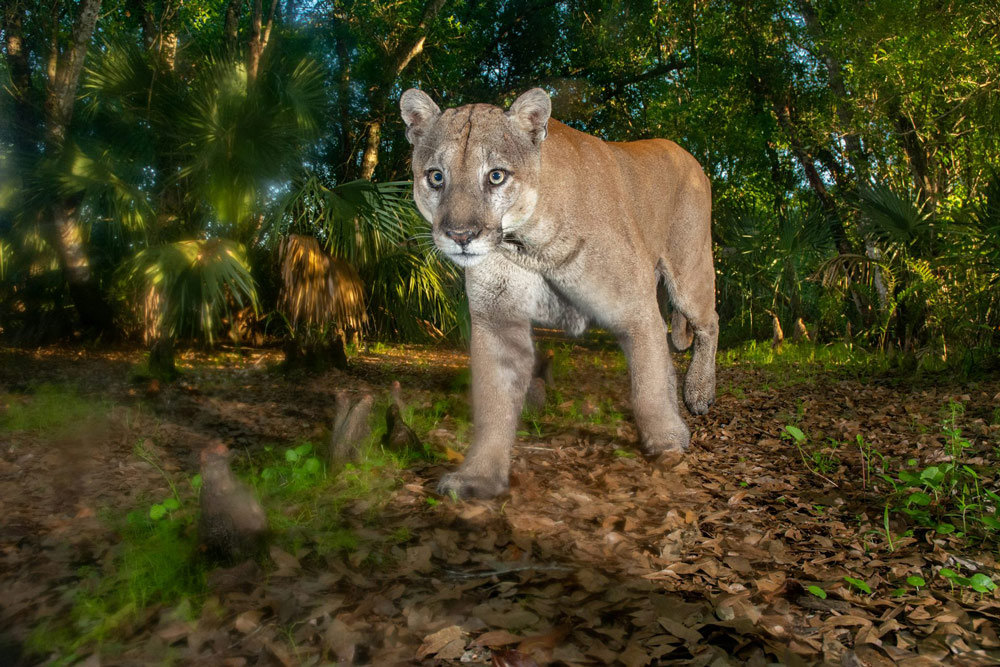
By Thomas Hoctor and Reed Frederick Noss
Imagine a Florida panther slinking its way 400 miles (645 kilometers) from the Big Cypress Swamp, in the southwest part of the state, to Okefenokee Swamp, on Florida’s northern border with Georgia, without ever being spotted by a human.
No one has yet documented a panther making this journey. But evidence suggests it happens.
Florida panthers were once distributed throughout most of the southeast U.S., but now their number is tiny – maybe 200 or so – and their known breeding range has greatly shrunk, now concentrated in southwest Florida.
They do show up in north Florida and Georgia on occasion when young males travel north looking to escape social pressure from adult males. Biologists have found their tracks not far south of Okefenokee. One panther made it almost to Atlanta before it was shot by a hunter.
Large mammals such as the Florida panther and black bear literally need room to roam in order to hunt, breed and thrive. Such journeys across the state of Florida are possible thanks to the Florida Wildlife Corridor, a statewide system of interconnected wildlife habitat that turns 15 this year.
The Florida Wildlife Corridor built on conservation efforts that date back to the 1980s and 1990s, when researchers from the University of Florida, including the two of us and our mentor Larry Harris, created maps of existing and proposed conservation areas that interlinked across the state.
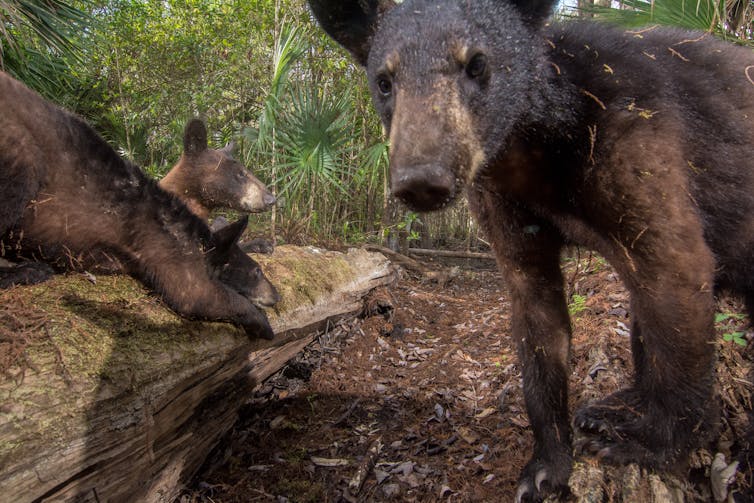
Carlton Ward Jr./Wildpath
Today, the Florida Wildlife Corridor spans 18 million acres – about half of the state.
Ten million of these acres are protected from development. They are either local, state, regional or federal public conservation lands or they are private conservation easements. These easements restrict the landowners’ uses of the land to activities compatible with wildlife conservation, such as ranching, timber production and other sustainable activities.
The other 8 million acres are the focus of state-funded land protection efforts to close the unprotected gaps. For now, these lands could be converted to intensive residential, commercial or industrial development.
The corridor is an ambitious conservation project. It provides sufficient habitat to sustain healthy wildlife populations while also protecting Florida’s key ecosystem services, including water quality and flood storage. Ecosystem services refers to the benefits that ecosystems provide humans.
The corridor is also a unique example of how conservationists can combine science with public education and outreach to protect important natural habitats – even in regions like Florida that face burgeoning population growth.
Florida’s population boom
Until the early 20th century, Florida was the most remote and undeveloped state on the East Coast.
After World War II and the introduction of affordable home air conditioning, Florida transformed from a sleepy winter holiday destination to the third-most-populated state in the nation.
Currently, about 300,000 new residents move to Florida each year.
With this population growth came a rapid loss of natural habitat and rural landscapes. Using federal land use data, we calculate that approximately 60,000 acres of Florida habitat are lost each year.
Florida’s development was initially concentrated along the coasts, especially in areas with extensive beaches. With the opening of tourist attractions such as Disney World near Orlando in 1971, central Florida also became a hub of rapid growth.
It became clear to concerned Floridians that virtually all land not protected by permanent conservation designations could eventually be lost to urban and suburban sprawl.
Responding to these concerns, Florida became a leader in land protection, which has generally been popular and bipartisan in the Sunshine State.
Since the 1970s, Florida has protected millions of acres of conservation lands through programs including the Florida Preservation 2000 Act of 1990, the Florida Forever acquisition program that replaced it in 2001, and the Rural and Family Lands Protection Program, also created in 2001.
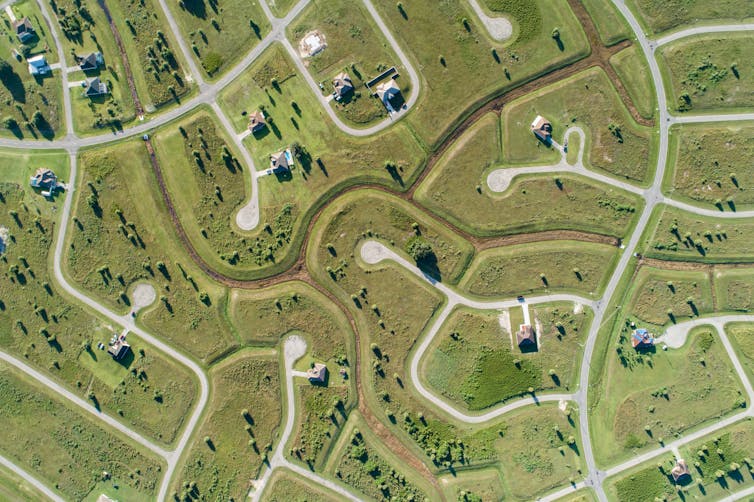
Carlton Ward Jr./Wildpath
Scientists identify key areas to protect
Wildlife biologists since the 1930s have observed how birds and mammals use wooded fencerows, hedgerows, streamsides and other natural corridors to travel through agricultural regions in the U.S. and Canada.
When corridors are protected, they allow animals to travel safely across landscapes and they can save animals from extinction. They also provide people with ecosystem services such as clean water and flood protection.
Since 1995, the Florida Ecological Greenways Network, or FEGN, has identified a statewide system of large, intact natural areas and connecting green spaces. It is now part of the state-legislated Florida Greenways and Trails System, a statewide network of recreational trails and ecological corridors.
As conservation scientists who are deeply involved with the FEGN, we were able to make use of the state’s early investment in geographic information systems. GIS produces digital maps and other high-quality data on the locations of wildlife habitat and other conservation priorities.
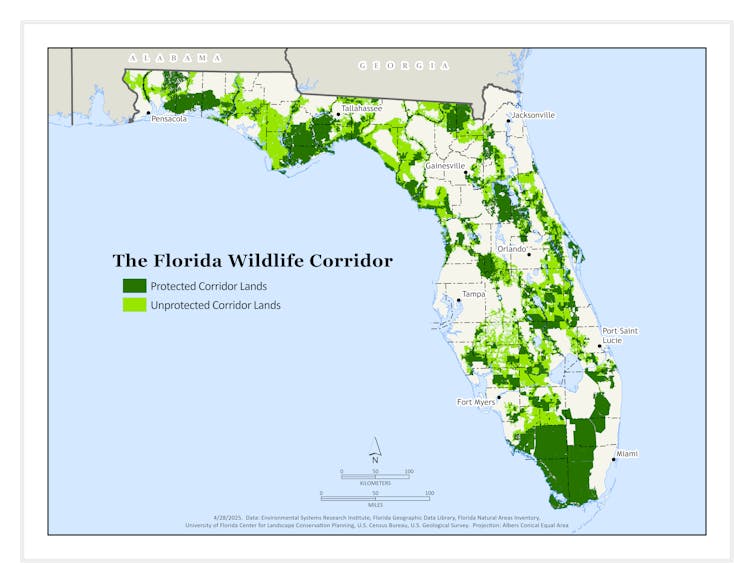
University of Florida Center for Landscape Conservation Planning
We continue to work with state agencies and other partners to continually update the FEGN as land use changes and as better data and tools become available to identify conservation priority areas.
Getting the public on board
While the FEGN proved fundamental for supporting state conservation programs, it was not widely known by Floridians or visitors to the state.
In 2010, conservation photographer Carlton Ward and colleagues proposed a simple, unified map and a public campaign to promote protection of the top-priority lands in the Florida Ecological Greenways Network.
Ward called it the Florida Wildlife Corridor.
He organized a team of photographers, videographers and scientists who trekked across large swaths of the corridor to document Florida’s natural ecosystems and native species that were threatened by development.
The expeditioners highlighted species like the Florida panther, Florida black bear and Florida grasshopper sparrow. They raised awareness about the corridor’s connection to water conservation, lands managed by ranchers and foresters, and recreational opportunities. And they produced documentary films, media and social media coverage, and public talks and events to educate the public on the importance of protecting the corridor.
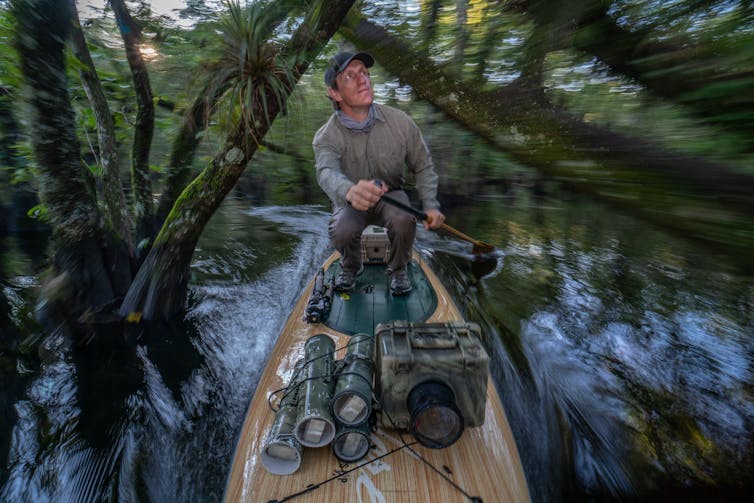
Carlton Ward Jr./Wildpath
Bipartisan support continues
In June 2021, Florida Gov. Ron DeSantis signed the Florida Wildlife Corridor Act into law. The legislation, which had unanimous support from the state Legislature, officially recognized the corridor’s critical role in Florida’s economy, cultural and natural heritage, and protection of imperiled species and ecosystems.
The law also reenergized legislative support and funding to acquire land directly for conservation and to establish conservation easements on private lands.
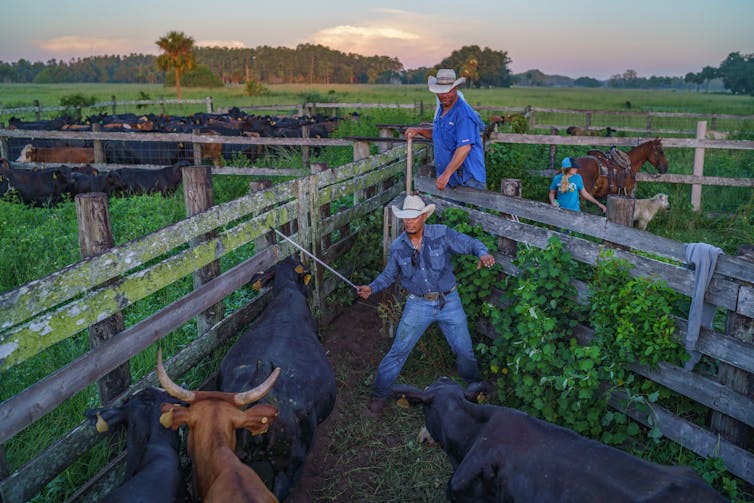
Carlton Ward Jr./Wildpath
The 2025-2026 Florida budget, which is still under negotiation, earmarks US$300 million to $450 million for land protection programs.
And on April 23, 2025, the Florida Senate passed a resolution to proclaim April 22 as Florida Wildlife Corridor Day. The resolution affirmed the corridor’s importance as “a unique natural resource” that is essential for “preserving the green infrastructure that is the foundation of this state’s economy and quality of life.”
There is a lot of land protection work left to be done in a race against a burgeoning human population. But Florida has proved ready to implement science-based strategies and work with willing landowners to protect a statewide wildlife corridor as a key element of Florida’s future.
The Florida Wildlife Corridor is also a potential model for other states and regions that want to protect viable wildlife populations and ecosystem services.

Carlton Ward Jr./Wildpath
Thomas Hoctor, Research Associate Professor of Landscape Architecture, University of Florida and Reed Frederick Noss, Conservation Science Coordinator, University of Florida
This article is republished from The Conversation under a Creative Commons license. Read the original article.
![]()
Thomas Hoctor is Research Associate Professor of Landscape Architecture and Reed Frederick Noss is Conservation Science Coordinator, both at the University of Florida.





























What Else Is New says
It is crucial to protect conservation lands including wetlands from development. We must remain vigilant when the Florida Legislature begins altering restrictions on the environment, supporting Florida Fish and Wildlife bear hunts (killings) and wanting to take public parks for development. Folks, please support Riverkeepers, the North Florida Land Trust and other entities who protect our Florida environment,
Pogo says
https://www.google.com/search?client=firefox-b-1-d&q=requiem&sei=RaMoaKLKIPObwbkPoIuVwA8#fpstate=ive&vld=cid:eeeed6b1,vid:Zi8vJ_lMxQI,st:0
Billy says
Easy. Don’t have to be a rocket scientist. Stop all of development and encroachment into the wildlife and Woodlands ! All of Florida will look like Los Angeles in couple years, be all concrete and roof tops!
Laurel says
When I was growing up, State Road 84 was a two lane road (y’all see the “84” sign on your way to Jacksonville? That’s 84 Lumber from Ft. Lauderdale), with a canal running along side it (now it’s an unrecognizable super highway). Then, Alligator Alley was built, traveling from Ft. Lauderdale to Ft. Meyers. It ran right through the Everglades and the Miccosukcee Tribal land. The panthers were being hit right and left on the new highway. The state then put in cross ways under the Alley for wildlife to pass through. I guess that did help for a while, but then Parkland, Wellington and other large subdivisions came along, right up to the edge of the Everglades.
Some wanted to place a large, international airport right in the ‘glades. At least that was stopped. Our airport, off SR 84 in Ft. Lauderdale, had one front desk, a small restaurant, and we could pull up and park by the front door. Now, the runway literally extends right over Federal Highway. It’s huge! Well, I’m glad they built east, which had already been developed. Imperial Lanes is a long lost memory!
Not too long ago, the state brought in Texas cougars to mate with the Florida cats as their numbers were so small that they were inbreeding. Now they are down to 200 animals. That is a complete shame. Should have never happened.
I don’t care how often developers, real estate people, investors, the tourist industry, vacation rentals and the Chamber of Commerce tells us just how wonderful growth is, what is happening (has been happening) to this state is unsustainable. Our daughter was heading south on I-95 just a few days ago, and saw a black bear trapped on the median between the southbound and northbound lanes near Daytona. She said there was a trooper there, with the lights on, but she doesn’t know how it ended up. This whole disregard for the wildlife around us is a danger to us as well as to the animals, and a loss for all of us.
I have learned that greed has no boundaries, but we need to set some before all that makes this state what it is, is completely trashed.
PC talks says
Even though, looking at the conservation land corridor map and wishing there would be more of the dark green, this article left me a bit more hopeful. Recently, driving by the Old Kings road and watching the habitats being destroyed right in front of my eyes, I feel sick in my stomach and hopeless. I am thankful there are people who are in power to do something for our nature friends. I hope there is someone in Palm Coast who is interested and has connections to start initiation for an emergency project to build some kind of pathways across the roads for animals because they are being squished out of their habitats left and right.